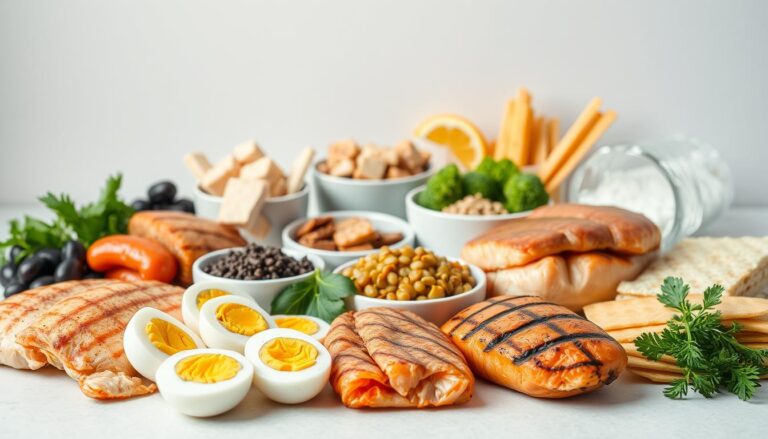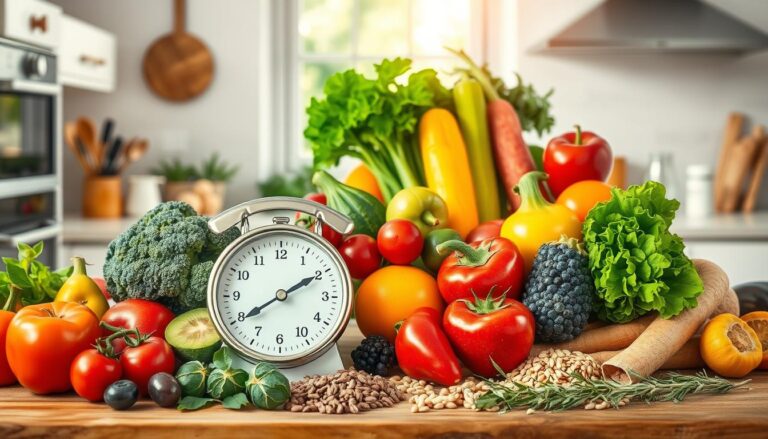It could seem like an uphill struggle to lose weight. It is easy to lose hope when faced with so many competing opinions and fad diets.
The reality, however, is that dietary adjustments that stick are the key to healthy weight reduction. Incorporating tasty, nutrient-dense meals into your diet will help you feel full and invigorated all day long.

In this piece, we’ll take a look at ten superfoods that might help you shed pounds. Each item has its own set of scientific advantages, and we’ll go over them as well as some ways to include them in your diet.
A world of taste and wellness by eliminating restrictive diets!
1. Nutrient-Dense Leafy Greens A Natural Reward from Mother Nature
The unsung heroes of the greens include kale, spinach, and Swiss chard, among others. They’re exceptionally low in calories and carbs while offering a richness of fiber. Fiber keeps you feeling fuller for longer, lowering cravings, and limiting overeating.
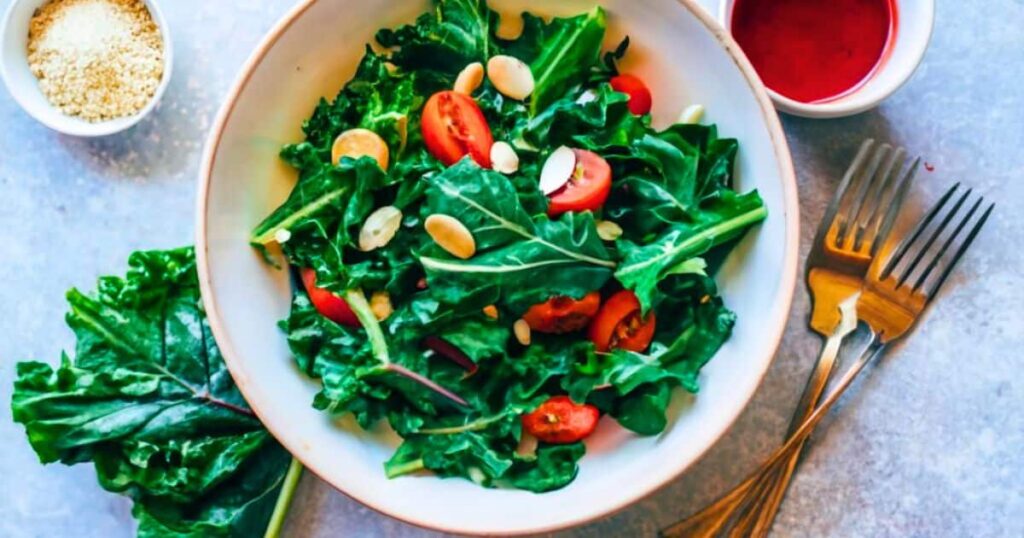
In addition, these leafy greens are packed with essential vitamins and minerals, such as vitamin K, vitamin A, and iron. Incorporating them into your daily diet can help improve digestion, boost immunity, and support overall health and well-being. Don’t underestimate the power of these simple, yet highly nutritious, vegetables in promoting a balanced and healthy lifestyle.
Leafy greens are also rich with critical vitamins and minerals, including vitamins A, C, and K, iron, and calcium. These micronutrients have a key role in metabolism, energy generation, and general health, all of which contribute to good weight control.
By regularly consuming leafy greens, you can enhance your body’s ability to function efficiently and effectively. Whether you prefer spinach kale or Swiss chard, these vegetables can easily be incorporated into various dishes, smoothies, and salads. The versatility and benefits of leafy greens make them a staple in any well-rounded diet, so be sure to make them a regular part of your meals for optimal health and vitality.
Tips: Start your day with a power green smoothie, add a hearty handful of spinach to your omelet, or eat a side salad with a light vinaigrette dressing for a gratifying and healthy boost.
2. Lean Protein The Building Blocks of Satiety
Protein is another cornerstone of a good weight reduction regimen. It helps develop and repair muscular tissue, which in turn raises your metabolism and burns more calories during rest. Protein also enhances feelings of satiety, keeping you feeling fuller for longer and lowering the need to snack between meals. Incorporating protein into your meals can help you stay on track with your weight loss goals by helping you feel satisfied and energized throughout the day.
Additionally, protein can aid in preserving lean muscle mass while losing weight, ensuring that the weight you are losing is primarily fat. Including sources of protein such as lean meats, eggs, dairy, and legumes in your diet can help support your weight loss efforts and improve your overall health.

Lean protein foods like chicken breast, fish, beans, and lentils are ideal alternatives. They’re lower in fat compared to their red meat cousins, making them good for weight control. Not only does protein help with weight loss, but it also plays a crucial role in repairing and building tissues in the body. By incorporating a variety of protein sources into your meals, you can ensure that you are getting all the essential amino acids your body needs to function optimally.
So, next time you’re planning your meals, make sure to include a good source of protein to help you reach your weight loss goals faster and in a healthier way.
Tips:Grill some skinless chicken breast for a fast and simple protein source, integrate salmon into your weekly dinner rotation for a dose of healthy fats, or make up a hearty lentil soup for a fiber- and protein-rich lunch.
3. The Magic of Beans and Legumes A Feast for Your Gut and Your Waistline
Beans and legumes, including chickpeas, black beans, and lentils, are nutritious powerhouses. They’re filled with protein and fiber, making them very satiating and great for weight control.
These superstars also possess a high starch content. Resistant starch functions as a prebiotic, supporting the development of beneficial gut flora, which has been related to enhanced metabolic health and weight control. In addition to their high starch content, beans and legumes are also packed with vitamins and minerals such as iron, magnesium, and potassium.
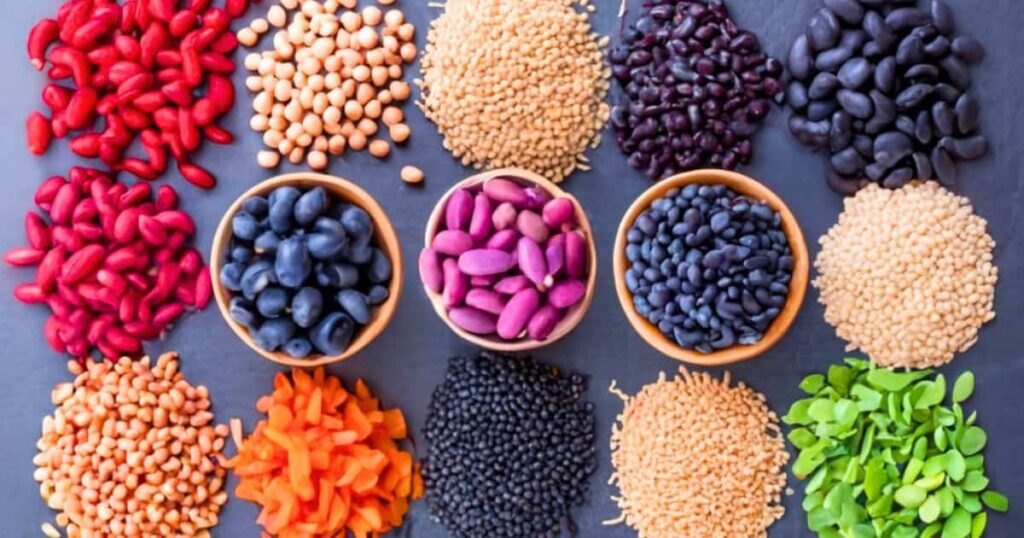
Incorporating a variety of beans and legumes into your diet can help reduce the risk of chronic diseases such as heart disease and diabetes. So next time you’re looking for a healthy and filling meal option, consider adding some beans or legumes to your plate!
Tips:Explore the world of vegetarian chili, amp up your salads with kidney beans, or try a great chickpea curry for a savory and full lunch.
4. Nature’s Candy Fruits for Sweet Satisfaction
Fruits are typically vilified on weight reduction journeys, but they may be a helpful supplement to your diet in moderation. Packed with vitamins, minerals, and antioxidants, fruits may help control cravings for sweet pleasures while supplying critical nutrients.
The trick is to concentrate on fruits with a lower glycemic index GI. Fruits with a low GI release sugar slowly into the circulation, reducing spikes in blood sugar that may contribute to increased appetite and cravings. Berries, apples, pears, and grapefruit are all terrific low-GI fruit options. These fruits provide a satisfying sweetness without causing a rapid rise in blood sugar levels.
Additionally, the fiber content in these fruits can help you feel full for longer periods of time, preventing overeating. Incorporating a variety of low-GI fruits into your diet can help you maintain a healthy weight while still enjoying the delicious flavors and benefits of fruit. Remember, moderation is key when it comes to any food, including fruits.
Tips:Pair your low-GI fruit with a source of healthy fat or protein for an even more enjoyable snack. Try some sliced apples with almond butter or a handful of berries with Greek yogurt.
5. Nutty Goodness A Source of Healthy Fats and More
Nuts and nut butters are a treasure trove of nutrients. They offer a tasty combination of protein, healthy fats, fiber, vitamins, and minerals. The beneficial fats in nuts enhance satiety and help control blood sugar levels, both of which aid in weight management.
Just be aware of portion amounts since nuts are calorie-dense. A little handful, around the size of your palm, is an ideal serving to receive the benefits without ingesting additional calories. Nuts are also a great source of antioxidants, which can help reduce inflammation and protect against chronic diseases.
Including a variety of nuts in your diet can provide a wide range of health benefits. Consider incorporating nuts into your meals and snacks to boost your overall nutrient intake and support your overall well-being. Just remember to practice portion control to prevent overconsumption of calories.
Tips:Enjoy a sprinkle of almonds over your morning porridge, add a dab of natural peanut butter to your apple slices for an afternoon pick-me-up, or mix chopped nuts into your salad for an extra crunch.
6. Cruciferous Champions: Broccoli, Cauliflower, and Beyond
Cruciferous plants, including broccoli, cauliflower, Brussels sprouts, and cabbage, are nutritious powerhouses. These vegetables are rich in vitamins, minerals, and antioxidants that can help lower the risk of chronic diseases such as cancer and heart disease. Incorporating cruciferous plants into your diet can also provide a good source of fiber, which is essential for digestive health. Overall, these nutrient-dense vegetables are a great addition to any balanced diet.
Fueling your journey Powerful foods for sustainable weight loss
Cruciferous Champions Broccoli Cauliflower and Beyond
filled with fiber, vitamins, minerals, and special plant chemicals called glucosinolates. Glucosinolates break down into beneficial molecules during digestion, which have been associated with enhanced metabolism, decreased inflammation, and even cancer prevention.
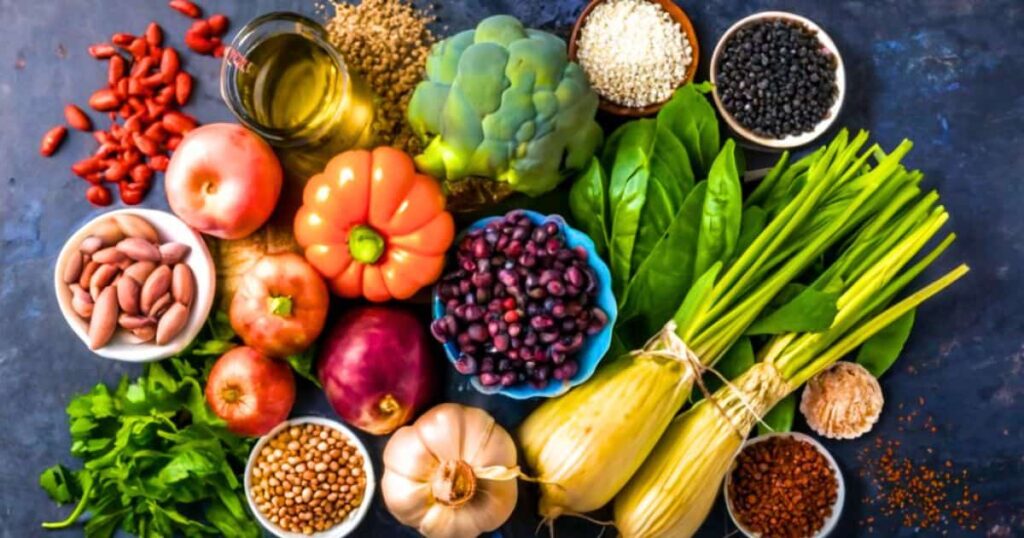
These versatile veggies are also exceptionally low in calories, making them excellent for adding bulk and nutrition to your meals without tipping the calorie scale.
Tips:Roast a colorful mix of cruciferous veggies with olive oil and spices for a filling side dish add riced cauliflower to your stir-fries for a low-carb basis or try a creamy cauliflower soup for a soothing and healthy lunch.
The Unsung Hero Whole Grains for Sustained Energy
Whole grains like brown rice, quinoa, oats, and whole-wheat bread are typically disregarded on weight reduction journeys. However, they provide a plethora of advantages that make them ideal companions in your quest for a healthy weight.
Whole grains are rich with complex carbs, fiber, and vital vitamins and minerals. These complex carbs provide your body with prolonged energy, reducing the energy crashes that may contribute to unhealthy snacking.
Tips: Swap out refined grains like white bread and spaghetti for whole-wheat alternatives, start your day with a bowl of oatmeal topped with fruit and nuts, or have a side of quinoa with your grilled salmon for a full and balanced dinner.
The Yogurt Powerhouse: Probiotics and Gut Health
Plain Greek yogurt is a superstar when it comes to weight control. It’s filled with protein, which keeps you feeling full and lowers cravings.
But the charm of Greek yogurt resides in its abundance of probiotics. Probiotics are living bacteria that encourage the development of beneficial gut flora, which has been associated with improved metabolism, better weight control, and even a stronger immune system.
Tips:Choose plain Greek yogurt over flavored ones, which are sometimes filled with added sugar. Sweeten your yogurt naturally with fresh fruit and a drizzle of honey, or eat it with a sprinkling of oats and almonds for a full breakfast or snack.
Soup for the Soul and Your Waistline
Soup may be a surprisingly helpful strategy for weight control. Broth-based soups are low in calories and fat but highly full owing to their high water content and fiber content from veggies.
The process of sipping soup may also help you feel more content, support portion control, and reduce overeating.
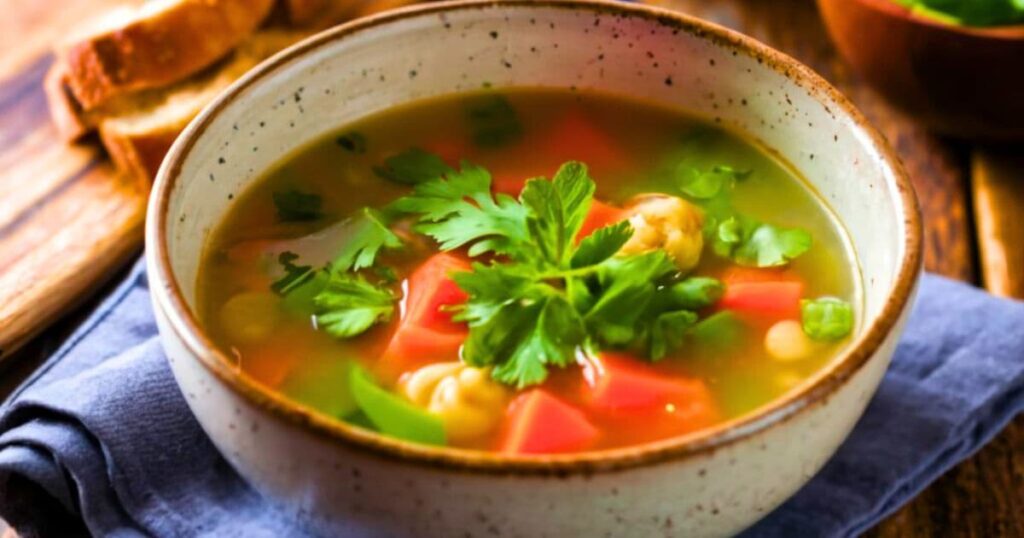
Tips:Whip up a pot of lentil soup for a robust and protein-rich supper, enjoy a bowl of minestrone soup filled with veggies and legumes, or start your meal with a light and refreshing vegetable broth to curb your hunger before your main course.
Avocado The Rich and Creamy Powerhouse
Avocados are generally viewed as a banned fruit on weight reduction journeys owing to their high fat content. However, the fat in avocados is a healthy fat known as monounsaturated fat.
Monounsaturated fats improve feelings of fullness and help control blood sugar levels, both of which contribute to weight management. Avocados also feature a considerable quantity of fiber, further adding to feelings of fullness and lowering cravings.
Tips: Mash up some avocado for a healthy and fulfilling toast topping, add some sliced avocado to your salad for a creamy texture and a dose of beneficial fats, or make up a batch of guacamole for a tasty and nutritious dip.
Conclusion
Sustainable weight reduction isn’t about restriction it’s about appreciating tasty, nutrient-rich meals that fuel your body and keep you feeling pleased. By integrating these 10 powerhouse foods into your diet, you’ll be well on your way to accomplishing your weight reduction goals and feeling your best. Remember, consistency is crucial. Make healthy eating choices a part of your lifestyle, and you’ll be setting yourself up for long-term success.
FAQs
Can I lose weight by merely eating these foods?
While these meals are highly beneficial for weight reduction, they should be part of a balanced and calorie-controlled diet. It’s crucial to consider portion sizes and your total calorie consumption for sustained weight control.
Do I need to remove all bad items from my diet?
Complete deprivation is generally untenable. Focus on making good choices most of the time, and allow yourself occasional pleasures in moderation.
What if I don’t like some of these foods?
There are so many tasty and nutritious alternatives available! Explore new recipes and learn methods to cook these dishes in a manner you prefer.

